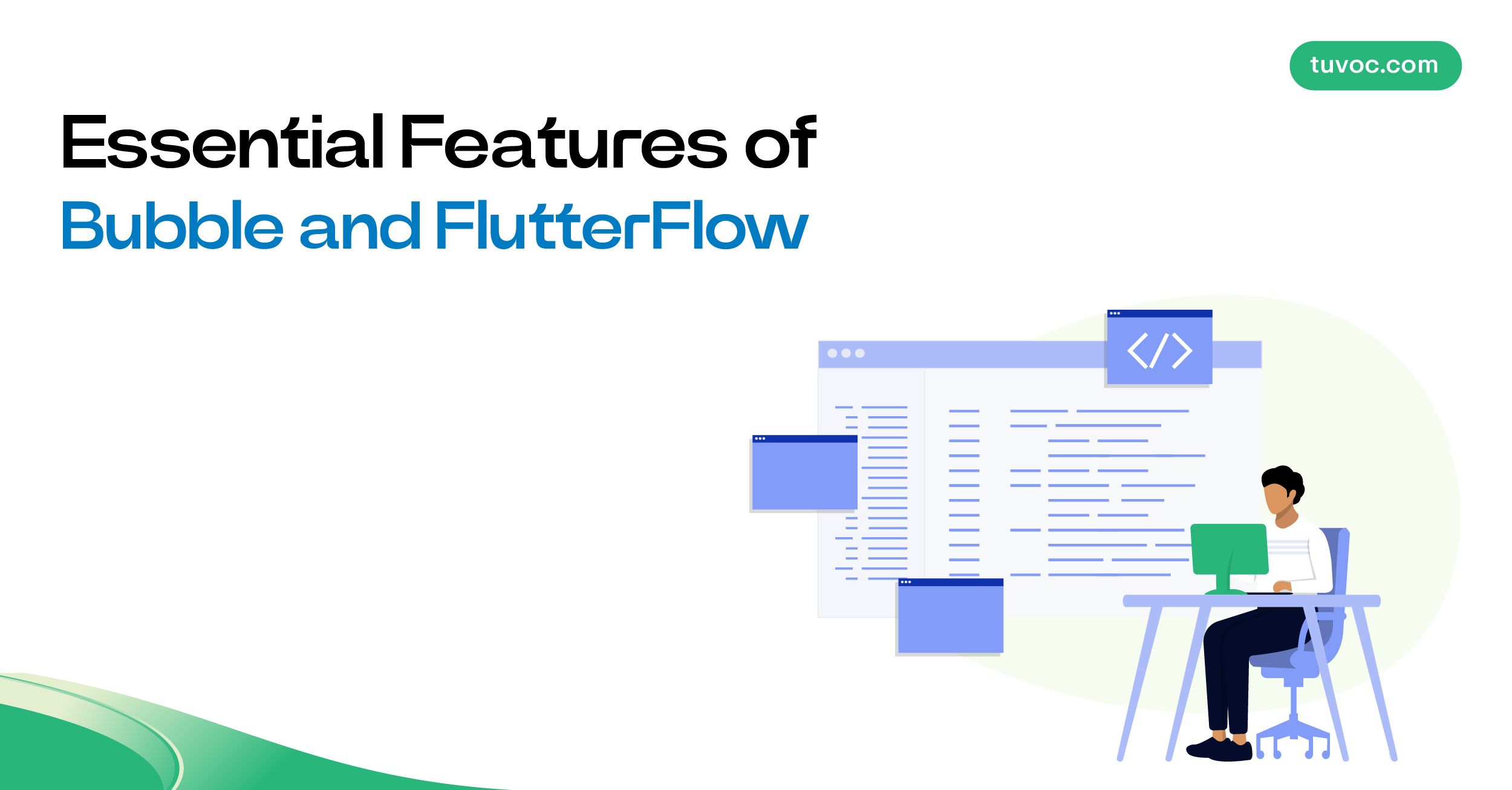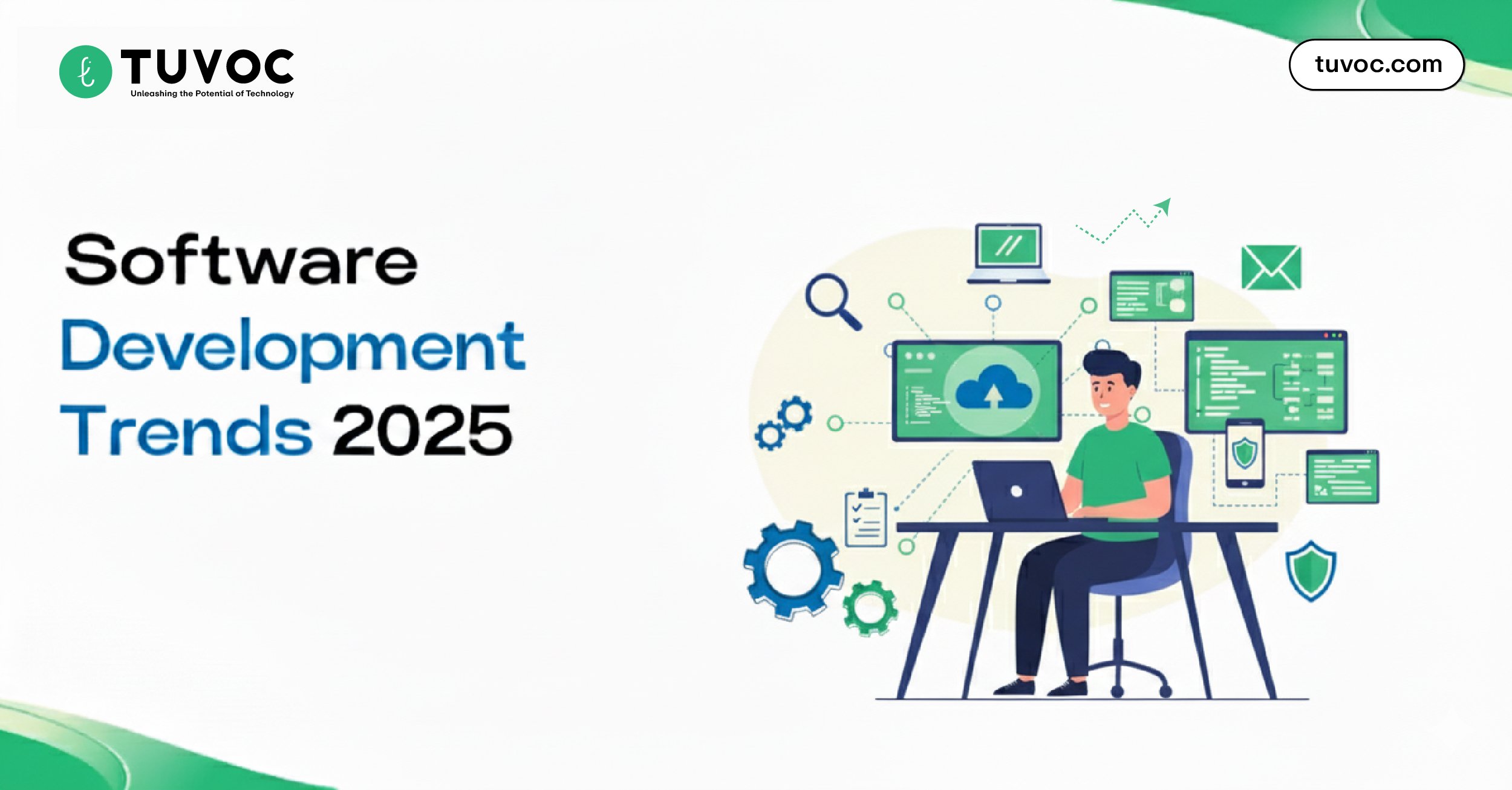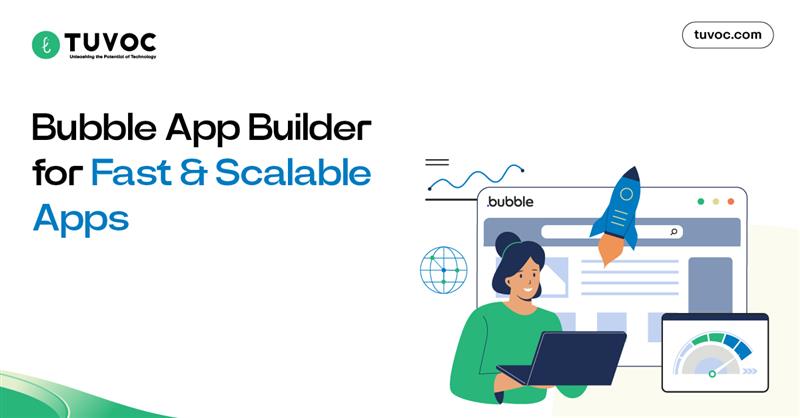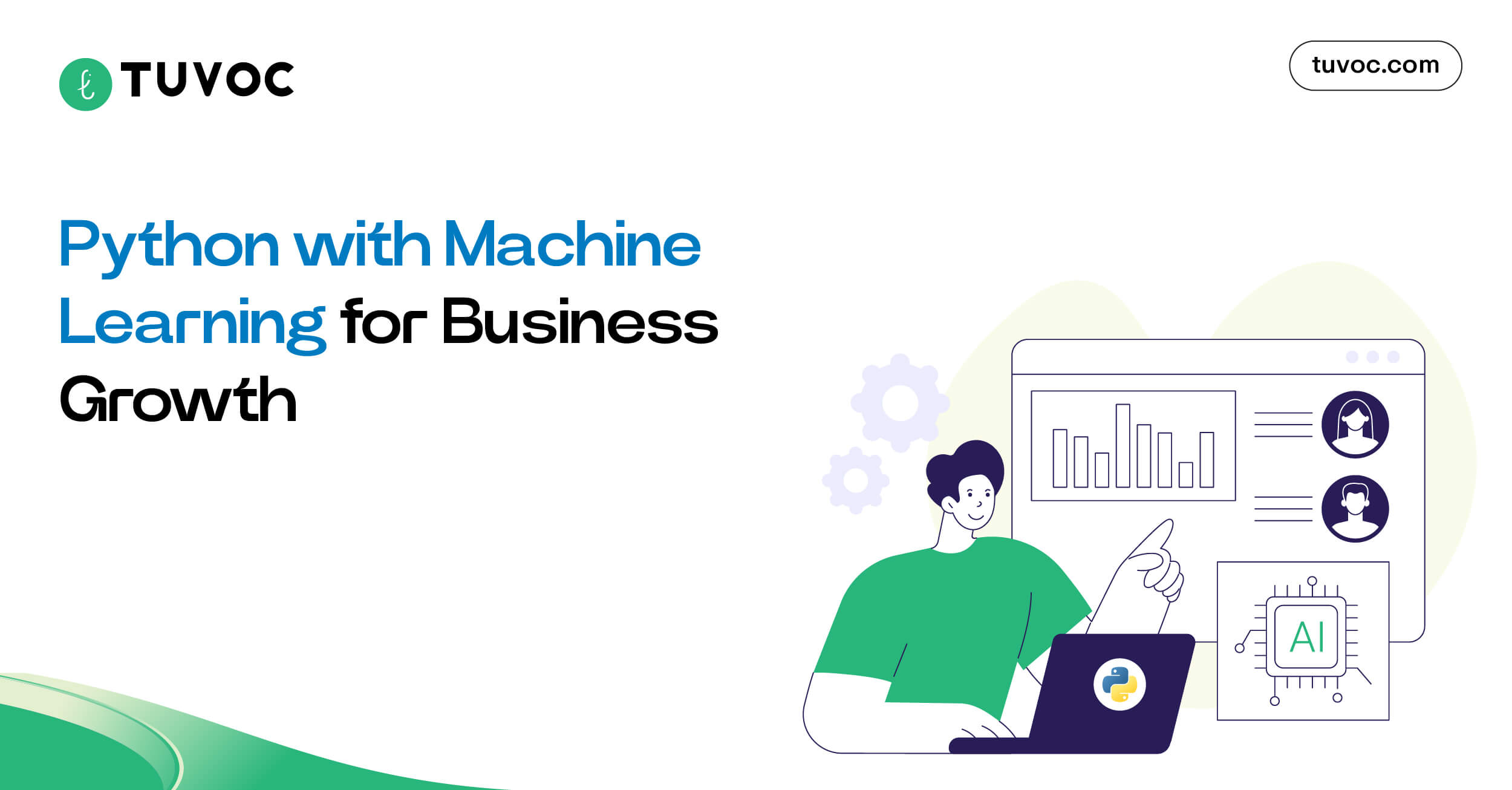Introduction
In 2025, building high performing and optimized apps is becoming a core necessity. This advancement has also expanded the focus on no-code app development. Do you know the projected revenue of app development software US $195.77 Billion in 2025. Even this market is estimated to grow 5.09% annually from 2025-2030 year. But on the other hand, faster development and deployment of apps is expanding. This is where no-code development comes in.
There are more than 250 no code web builders, and it is estimated that more than 70% of businesses will be using no code or low code app development platforms to reduce time to market. FlutterFlow and Bubble are popular no-code app development platforms that help in faster development, smooth AI integration, easy deployment, etc.
But while Bubble excels at web applications, FlutterFlow leads the way in cross-platform mobile app development. Are you confused between Bubble and FlutterFlow? Which one is best for your app development? You’re not alone. In 2025, choosing the right no-code platform could make or break your MVP development project.
With this detailed comparison, you can understand the advanced capabilities of the no code app development platforms.
At-a-Glance Comparison
- Choose Bubble if you want to build complex web apps, the platform that help in implementing complex logics, user roles, and dynamic workflow.
- Choose FlutterFlow if you want to develop native mobile apps for Android and iOS platforms with Firebase integration, easy code deployment, and real-time updates.
FlutterFlow and Bubble are powerful no-code platforms that help smooth the development process. Bubble majorly focuses on web app development, and FlutterFlow is a modern framework built on Goggle’s Flutter. FlutterFlow helps in developing native mobile apps and web apps.
With the detailed comparison mentioned in this blog, you will be able to understand the ideal development platform based on your unique business needs.
| Feature / Criteria | Bubble | FlutterFlow |
|---|---|---|
| Platform Type | No-code | Low code (with optional Dart coding) |
| Primary Focus | Web app development | Native mobile + cross-platform app development |
| Code Export | Not supported | Full Flutter/Dart code export |
| Mobile App Support | Via wrappers (e.g., BDK) or beta native | Built-in native mobile app builder |
| Ease of Use | Beginner-friendly | Moderate – some technical knowledge helpful |
| Backend Capabilities | Built-in database & workflows | Firebase-based, limited backend tools |
| Customization | Via workflows, plugins | High – custom code, APIs, logic |
| Best For | MVPs, dashboards, internal tools | Scalable mobile apps, cross-platform products |
What is Bubble?
Bubble.io is a no-code web app development platform that helps non-technical users in building high performing web apps without writing code. It offers a reliable and no-code approach to build dynamic and fully functional websites with visually appealing design and smooth UI.
Even as per SemRush, Bubble receives more than 2.6 Million visits per month globally. This indicates the growing popularity of Bubble. Bubble.io continues to manage a large, active user base, with over 2 million users who have created over 3 million apps.
By using Bubble, developers can boost development speed, time-to-market, and overall agility. The latest survey by Bubble.io has highlighted the core competencies and how they have an impact on businesses.
Case Study:
- Recently, certified Bubble developers at Tuvoc have delivered a highly scalable and secure Bubble app for the real estate business, which helps them boost their operations by 52%.
- Another project has revolutionized the travel industry by streamlining the processes and providing a smooth user experience. This has boosted revenue by 45% in just 3 months.
- Accelerated Development: Over 80% of users reported that building applications becomes 3–8 times faster, with another 8% stating it’s up to 9 times faster compared to traditional development methods.
- Faster Time to Market: A remarkable 96% of surveyed users confirmed that Bubble enabled quicker product launches.
Expert Thoughts
“We now have the ability to build full-fledged applications, scale with our business needs, and adapt features to user needs, faster than before using Bubble.”
— Travis, Senior Manager, Application Development at Cydcor (Source)
Enhanced Agility:
By using Bubble, businesses can now get a competitive advantage with enhanced scalability and agility.
“Using Bubble has given us a level of agility we couldn’t previously achieve. It’s become a strategic advantage with positive downstream effects for our customers.”
— Michael Ong, Product Management at Seagate (Source)
What is FlutterFlow?
FlutterFlow is a visual development platform by the Flutter framework of Google, created specifically to build cross-platform apps. Flutter is used for its advanced capabilities like high performance and native-like performance for both Android and iOS platforms. FlutterFlow extends these capabilities by offering a no-code approach that helps developers to develop complex and feature-rich apps easily.
The most standout features of FlutterFlow involve exporting clean and structured code structures that allow easy customization. This enables developers to leverage the advantage of no-code and a traditional development approach. FlutterFlow also provides enhanced integration with Google services which help in maintaining real time database security and authentication.
Case Study (source)
- Atlas is redefining credit access with 5× higher approval rates than traditional cards. The app helps users save an average of $1,850 per year and has over 100,000 downloads, with a 4.6-star rating.
- Breatho transforms stress relief into a playful experience with 20 animated breathing exercises and calming sounds. Built with FlutterFlow, it’s both therapeutic and engaging, helping users build lasting wellness habits.
Essential Features of Bubble and FlutterFlow

Both FlutterFlow and Bubble app development platforms are the most popular no-code app builders that enable developers to use drag and drop features and build high performing apps. The essential features of Bubble and FlutterFlow are mentioned below:
Features of FlutterFlow
- Responsive Design
It helps in designing UIs that adjust well on mobile, tablet, and desktop using simple drag-and-drop tools and constraint features.
- Template Screens
With pre-made screens and built-in templates, developers can create a high-quality solution faster and keep the UI the same for different platforms.
- Firebase Integration
By offering support for Firestore and Firebase, backend configuration becomes fast and can easily scale up for real-time apps.
- Deployment Options
Developers can deploy apps on iOS, Android, and Web platforms. Web apps also provide an opportunity to implement custom domains.
- Custom Functions
Developers can use Dart programming, ready-made elements, or community modules to add their own logic to the app and implement required features.
- History Logs
With the advanced feature of maintaining logs, FlutterFlow developers can check what updates have been made to a project and restore earlier revisions whenever they’re helpful.
- Third-party Integrations
FlutterFlow developers can leverage tools such as Algolia (search), PayPal/Braintree (payment), Google AdMob (ads) and others through the REST API (GET and POST).
- Code Export
Copy the complete Flutter project and keep coding in natively supported IDEs such as Android Studio or VS Code.
- Cross-Platform Development
Build an app only once with a single architecture and design for different platforms. And then, you can easily deploy it to iOS, Android, the Web or Desktop.
Features of Bubble.io
- Easy to Build Message Boards
Bubble provides tools where developers can build message boards that help users or team members to message each other or hold discussions straight from the app.
- eCommerce Features
With Bubble, developers can implement e-commerce features like providing shopping carts, listings of products and checkout processes, suitable for online shops and online marketplaces.
- User Management
Handling login, authentication, user roles and password management happen right within the app, not through external services.
- Collaboration
Groups consisting of up to 40 people are able to edit the same project at the same time by using access control and versioning tools.
- Dynamic Content
Allows information to be updated as you use it and customized. Apps are designed to adjust their content as the user’s actions change, and new data becomes available.
- Database Scalability
Bubble features an optimized database that can handle apps with lots of users or many features.
- Performance Monitoring
With Bubble’s integrated performance monitoring tools, developers can keep a constant track of engagement metrics, such as page visits, session duration, and workflow bottlenecks, right within their applications.
Quick Recommendation for Businesses
| Business Goal | Recommended Tool | Reason |
|---|---|---|
| Build internal dashboards | Bubble | Easier workflows and built-in DB |
| Launch mobile MVP fast | FlutterFlow | Firebase + native code export |
| Avoid vendor lock-in | FlutterFlow | Full code ownership |
Full-Stack Capabilities
Bubble is a one-stop development platform that has been built in database development and management. It comes with enhanced backend functionalities that help in secured data management. But it restricts the developers from getting access to external APIs and integrations.
In contrast, FlutterFlow provides enhanced control and smooth integration of Firebase, MySQL, REST API, and others. This allows for enhanced flexibility to create custom data structures.
Verdict: Bubble is most suitable for beginners, while FlutterFlow provides more flexibility for advanced development projects. So, we can consider FlutterFlow as flexible for a robust backend and Bubble has built-in components that are beginner friendly.
Performance & Scalability
Bubble provides enhanced scalability to users based on project size, complexity, and required features. It helps in the development of high quality and optimized apps that ensure smooth user performance. To boost the performance of the app for increased user traffic, you can optimize the workflow, use the API workflow tool, and add an external database for faster page loading.
FlutterFlow provides advanced features like client-side caching, lazy loading, and optimization of images for smooth performance. It helps smooth integration with Firebase, which helps establish a scalable backend for real-time data management. Furthermore, if businesses require advanced features and secured integrations, dart code helps in implementing these advanced functionalities.
As compared to bubble, which doesnl’t allow code export, FlutterFlow help in exporting code and rehosting the app on another platform or cloud.
Verdict: To ensure high performance and scalability, FlutterFlow is the best option, while Bubble can be used for simpler web app development.
Community and Ecosystem
Bubble has an active community that has comprehensive templates and plugins that help with easy development and deployment.
FlutterFlow has an enhanced marketplace of secured and pre-built components, templates, and integrations. It helps developers to boost the development process and provide accessibility to project code.
Verdict: Bubble has a strong ecosystem and active community, while FlutterFlow is in growing stage. But FlutterFlow provides an enhanced capability of providing easy code export which is lacking in Bubble.
Code Ownership
Bubble helps users to create a secure coding structure, but it does not have access to the source code. This restricts the migration process when necessary and requires the redevelopment of the app from scratch.
FlutterFlow provides enhanced accessibility to source code so that software can be easily deployed on any other platform. This allows for enhanced scalability, flexibility, and long-term benefit.
Verdict: FlutterFlow provides enhanced access to software source code which helps in easy migration process, while Bubble doesn’t provide accessibility to code which leads to creating coding structure from scratch when you need to migrate the software.
AI features
The advanced AI features in Bubble help in creating software using textual prompts. This helps users to build the entire app quickly without creating a coding structure. The advanced features of Bubble AI include app generator, page builder, API connector and advanced AI-enabled features to embrace the advanced capabilities of modern technology.
Flutterflow can be easily integrated with ChatGPT by OpenAI, which helps in the development of advanced assistants by using AI/ML algorithms. These capabilities of FlutterFlow help in developing AI enabled software using a few prompts. The advanced features are currently available to a limited extent, but it will expand in the future.
Verdict: AI in FlutterFlow helps automate code creation and enhancements in designs. On the other hand, Bubble offers a comprehensive AI app generator with advanced capabilities. The choice depends on the project’s requirements.
Design and UI Capabilities
The visual editor of Bubble helps developers to build full proof and feature-rich web applications with drag and drop facilities, eliminating coding requirements. It is an ideal approach to build fully functional prototypes quickly, run testing of prototypes, and launch the first version of the app smoothly.
The UI capabilities of FlutterFlow provide drag and drop functionality to design and build visually appealing web and mobile apps. It offers a wide range of pre-built templates, components, UI widgets, and advanced designing approaches to build custom platforms. FlutterFlow app builder also provides interactive prototyping with animations, transitions and gestures.
Pros of Bubble App Development
1. No-code Friendly
Bubble helps in the development of complex apps by saving time in writing code. It is ideal for non-tech founders, MVPs, and interactive prototypes. With its visual editor, users can easily drag and drop elements to create workflows and build a database structure without using HTML, CSS and JavaScript.
2. All-in-one Platform
It helps in managing multiple tools and services by utilizing built-in database capabilities, backend logic, API integration, and smooth hosting. This reduces the need for various tools and services, enabling a faster development cycle. Even SaaS firms employ Bubble report growth rates of 25-35% based on the yearly recurring revenue tiers.
3. Flexible Workflow
Bubble.io improved its infrastructure in 2025, which improved workflow responsiveness and page load rates, particularly for apps with optimized databases and moderate traffic. It helps build complex business logic and implement condition-based actions visually. It helps in triggering actions based on user inputs and helps in setting up conditions to modify the app flow dynamically. With the Bubble framework, you can customize an app and establish its workflow based on user interactions.
4. Large Plugin Marketplace
Bubble has a rich plugin ecosystem with both free and paid options that leads to time saving by using pre-built components. These plugins help you boost app functionality like payment processing, maps and data management. It also allows integration of popular tools like Stripe, Google Maps, Airtable and others.
5. Strong Community and Learning Resources
Bubble has a supportive community and extensive documentation including forums, templates and tutorials that assist beginners to start the development process quickly. The user base constantly shares tips, templates, feedback, and potential solutions. Bubble Academy and YouTube tutorials provide structured learning solutions that help beginners in building high performing solutions. To keep users interested and informed about new features and platform development, the Bubble community forum remains active, with monthly updates and Ask Me Anything (AMA) sessions.
Cons of Bubble App Development
1. No Native Mobile App Support
Bubble primarily builds responsive web apps but not native mobile apps (those built with Swift or Kotlin). But you can build your Bubble app using third-party tools (example, BDK or Natively) or design it to perform like a mobile application in the browser. But currently it is in Beta version, in coming time developers will be able to build native apps smoothly using Bubble.
2. Performance and Scalability Issue
Bubble is a great approach for MVPs and simple apps with limited functionalities and features, as it might not support large databases and complex apps. Apps with complex workflows or large databases can slow down, and scaling requires upgrading it to more expansive pricing plans. Additionally, backend logic and database queries are not easily optimized as is done with traditional coded applications.
3. Lack of Responsiveness
Designing responsive and user-friendly apps in Bubble can be challenging and time consuming because its visual editor uses drag and drop layout that is not always adaptable across various devices. Optimizing it for mobile, tablet and desktop often requires manual adjustments and edits. But Bubble has improved this with a new responsive engine, but it requires expertise to utilize it to the fullest.
4. No Code Export
Bubble apps run on Bubble’s cloud infrastructure, and you cannot export the code (HTML, CSS or JS) to host on another platform. Additionally, if there is any change in Bubble pricing structure, your solution also gets affected, and you cannot migrate the Bubble app on another platform without rebuilding the app from scratch.
Pros of FlutterFlow
Cross-Platform Native Apps
FlutterFlow allows for native app development for both iOS and Android with a single codebase. Since it is built on Flutter, apps developed from FlutterFlow perform smoothly and are responsive across platforms.
Smooth Code Export
Unlike other low code tools that don’t allow export code, FlutterFlow allows smooth and secured export of code structure. This indicates that Flutter developers can continue their development process outside the platform when required and integrate it into a larger project.
User-Friendly UI Design
The drag-and-drop approach provides an intuitive and visually appealing design with real time previews. This helps designers and non-coders to build a responsive user interface by following Flutter’s design principles.
Firebase Integration
FlutterFlow offers built-in support for Firebase and enables advanced features like real-time databases, authentication, Firestore, and cloud functions without making extensive configurations.
Custom Functions & Logic
Despite being a low code platform, FlutterFlow supports custom Dart code which helps developers implement complex logic. This makes it more flexible compared to any other no-code tool.
Cons of FlutterFlow App Development
More technical than Bubble
Compared to Bubble, which is fully no-code, FlutterFlow can be more technical and requires an understanding of development approaches. Developers require basic understanding of some Dart and app architecture concepts, specifically
Limited Backend Tools
FlutterFlow has a robust frontend and Firebase integration, but it is not a full backend solution. It lacks extensive tools and approaches for backend logic, complex APIs and data modeling as compared to other platforms like Appgyver or Xano.
Restricted Plugin Ecosystem
The plugin library of FlutterFlow is limited, which restricts the implementation of comprehensive functionalities smoothly. But developers can manually integrate third-party apps and tools to implement the required features.
Paid Features Like Code Export
FlutterFlow provides code export, custom domain selection and GitHub integration but it requires a paid plan which restricts small businesses with limited budgets.
Key Things to Consider (As of June 2025)
Upcoming Feature Release
According to the Bubble Forum community, there are various updates on the upcoming feature release that enhance the app development process and ensure optimized performance.
1. Native Mobile Development Public Beta
In June 2025, Bubble released its native mobile development, public beta to all users, letting everyone begin developing native mobile apps within the platform. Additional features will continue to be incorporated during the beta stage. The next big focus is in-app purchases, and user feedback will assist in the future.
2. Improvements in App Build Using AI Technology
Bubble has now switched its AI generator to Claude 4 (the most recent model on Anthropic), creating a higher quality and quicker output. A future capability known as iterate will allow users to edit AI-powered apps in real-time, making specific changes without re-running entire pages.
3. Improvements to Workflow and editing
A current beta is an app interface manager that eases the process of switching between mobile and web view. There are zoom controls, a grid view, and better search features for workflow improvements (built to make it easier to create complex apps).
4. Mobile-Specific Updates
The mobile editor upgrades are now implemented to have button shadows, reading a page state in webview, pinch-to-zoom disable, and is configured with BubbleGo loading spinners. The remote React Native mobile plugin editor is already in alpha, and a mobile debugger is under development. The change in the location of app settings will be rationalized to make them easier to use on multiple platforms.
5. Platform Reliability and Performance
Bubble is switching off PLV8 and optimizing its caching infrastructure to make it more reliable, fast, and scalable.
6. Local and Education
To accompany the mobile beta, Bubble is also releasing a new YouTube course Getting Started with Mobile, which will guide people through how to learn in a fast and effective manner.
Upcoming Feature Release in FlutterFlow
FlutterFlow 6.0, the latest version, was released on May 28, 2025. It is the most powerful and intelligent version that provides advanced development flexibility, AI enhancement, and advanced automation capabilities. Diverse UX enhancements, bug fixes and improved search functionality.
1. Custom Classes
Import your Dart files and utilize custom classes directly in FlutterFlow, with enhanced support for mixins, inheritance and abstract classes.
2. Custom Code Expressions
Write inline multi-line Dart expression with real time error checking and autocomplete. This helps in determining the eros quickly and resolving them.
3. AI Completions
This will be released in the coming month, which provides AI-assisted code suggestions customized to your user data and project variables.
4. YAML Editing
For global refactoring with Git-like history and simple reverts, edit the underlying YAML for your project.
5. Projects API
The latest RESTful API that helps in writing/reading project data, enables CI/CD pipelines and automation.
6. MCP Server (Experimental)
Allow to write/read projects, create and manage components and pages using AI tools.
7. Multi-Team Support
This will be launching in July, which will help in smooth user collaboration working under various teams without switching accounts.
Quick Comparisons of FlutterFlow and Bubble App Development Platforms
| Feature | FlutterFlow | Bubble |
|---|---|---|
| Type | Low code (visual builder + Dart/Flutter code) | No-code (visual builder + workflows) |
| Platform Focus | Mobile-first (iOS/Android); also supports web | Web-first (responsive web apps); mobile via third-party wrappers |
| Primary Use Case | Mobile app development | Web application development |
| Technology Stack | Built on Flutter for cross-platform apps | Built on its own proprietary architecture |
| Target Users | Developers, technical founders, and dev teams | Entrepreneurs, non-tech founders, MVP builders |
| Visual Interface | Drag-and-drop UI builder | Visual editor with drag and drop workflows and design tools |
| Customization | High customization with code options and source code export | Extensive customization via workflows and plugins |
| Performance | High performance with native-like speed | Performance can vary; slower with complex apps |
| Code Export | Yes (full Flutter/Dart source code) | No (platform-locked, closed-source) |
| Hosting | Optional (can host on your own or external backend) | Mandatory (Bubble handles hosting internally) |
| Database Integration | Firebase, Supabase, MySQL, REST APIs | Built-in database and external API integrations |
| Deployment | Direct deployment to app stores and web | Web deployment with custom domain support |
| Learning Curve | Moderate (requires some dev knowledge for advanced use) | Low (easy for beginners and non-technical users) |
| Community Support | Growing community with solid documentation | Larger, mature community with extensive resources |
| Templates & Plugins | Moderate selection, better for technical users | Wide variety, very user-friendly for non-technical users |
| Responsive Design | Strong support for mobile responsiveness (native design) | Good responsive design, but setup is more manual |
| Real-Time Collaboration | Limited collaboration tools | Robust collaboration tools and team management features |
| Pricing Model | Freemium with paid plans starting at $12/month | Freemium with paid plans starting at $29/month |
| User Roles & Permissions | Basic role management | Advanced user roles and permissions built-in |
| SEO Capabilities | Limited SEO (focused on app store presence) | Strong SEO capabilities for web visibility |
| Version Control | Basic version tracking | Advanced version control with deployment workflows |
| Testing Tools | Basic in-app testing tools | Built-in debugging, preview, server logs and testing features |
| Offline Functionality | Limited (requires additional setup for offline access) | No native offline support (web-based, requires internet) |
| Scalability | Depends on backend choice (e.g., Firebase/Supabase scaling) | Scales well with Bubble’s built-in infrastructure and tuning options |
Conclusion
Selecting an ideal development platform from Bubble vs FlutterFlow becomes hard when you are unable to adapt to their capabilities, features and basics. It is important to understand which no-code development platform is most suitable for your business. Recently, one of the clients from the USA approached us for a feature rich and optimized web app for their e-commerce business. Our experienced Bubble developers have delivered top-notch web apps that align with their business. You can also hire dedicated Bubble developers to build web apps with an engaging user interface.
FAQs
FlutterFlow is better for mobile app development. It generates native code for both iOS and Android platforms, supports platform-specific features and offers smooth UI/UX compared to Bubble, which is primarily web focused.
Bubble is considered beginner-friendly for non-technical founders specifically who want to build web apps. FlutterFlow has a steeper learning curve due to its UI structure and mobile app logic, but it’s more accessible to designers and those familiar with Figma or Flutter.
Bubble app development is ideal to build MVPs quickly. This helps developers to offer rapid development and iteration without building coding structures.
Bubble is more suitable for internal web tools, admin panels, and dashboards due to its native web responsiveness and built-in backend capabilities.
Have an Idea? Let’s Shape It!
Kickstart your tech journey with a personalized development guide tailored to your goals.
Discover Your Tech Path →Share with your community!
Latest Articles

Comprehensive Guide to Software Development in 2025: Trends, Process & Best Practices
As a global society, we are facing headwinds; from geopolitics to finance to technology, turbulences are everywhere. Amidst these oscillations,…

Building Fast and Scalable Apps with Bubble App Builder’s Best Features
Introduction - Why Choose Bubble App Builder The fallacy of no-code platforms being unable to perform at an enterprise level…

Why Python with Machine Learning is Perfect for Your Business
In our daily lives, we are surrounded by advanced AI/ML models that help make our lives easier. From Alexa and…




